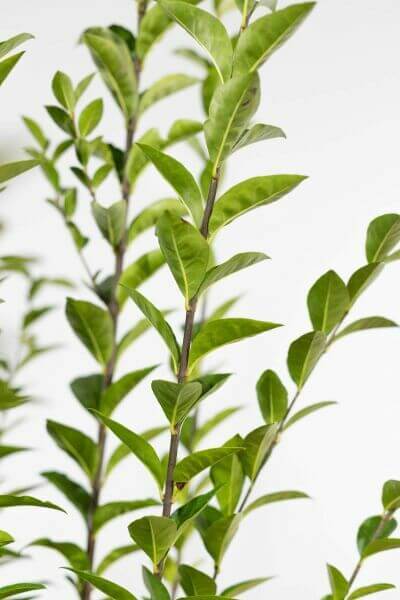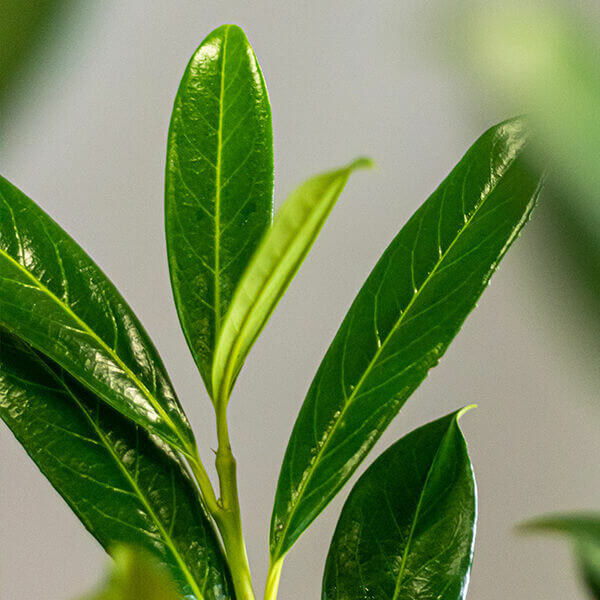Hedging Plants For Wind Protection
Hedging Plants For Wind Protection
Blog Article
Evergreen Hedge Plants For Year-round Greenery
Improve your garden's allure with rich hedge varieties such as Yew (Taxus), Thuja, Laurel, Photinia, and Bamboo, commemorated for their structural integrity and ecological benefits.
Yew and Thuja provide evergreen protection and winter durability, while Laurel offers fast development and broad, fragrant leaves.
Photinia includes seasonal beauty with its lively red foliage, and Bamboo lends a low-maintenance, tranquil ambiance.
These hedges enhance air quality, reduce noise, and develop tranquil, private spaces.
Correct planting, spacing, and maintenance guarantee energetic growth and environmental consistency.
Explore how these rich varieties can elevate your garden's appeal and wellness.
Key Takeaways
Change Your Garden With Lush Hedge Ranges
- Select Yew for its dense, evergreen growth and unequaled longevity.
- Choose Laurel for its quick development and broad leaves, making sure fast privacy.
- Choose Photinia for its vibrant seasonal foliage, which turns a striking dark red.
- Use Bamboo for a low-maintenance, winter-hardy hedge with visual appeal.
- Area plants 2-3 per meter and prune frequently for optimum development and health.
Popular Hedge Plants
When changing a garden with lavish hedge varieties, it's vital to consider popular hedge plants such as Yew, Thuja, Laurel, and Photinia due to their distinct qualities and advantages.
Yew (Taxus) is extremely respected for its durability and thick, green growth, making it a prime choice for withstanding landscapes.
Thuja is noted for its evergreen foliage and robust winter resilience.
Photinia adds seasonal vibrancy with red leaves that darken over time, developing vibrant visual appeal.
Laurel uses fast growth and fragrant, broad leaves, perfect for fast personal privacy.
In Addition, Bamboo is an exceptional choice for ambiance, providing a low-maintenance, winter-hardy option that boosts the garden's aesthetic with its classy, swaying walking canes.
These selections cater to a range of horticultural requirements and preferences.
Advantages of Garden Hedges
Garden hedges use a plethora of advantages, making them a valuable addition to any landscape. These natural barriers are cost-efficient to carry out and supply substantial wind protection, improving air blood circulation and contributing to noise decrease. The thick foliage of hedges like Thuja and Beech guarantees personal privacy by obstructing exposure, producing a peaceful and remote environment.
Hedges likewise play an essential role in microclimate guideline, offering a stable environment that cultivates plant growth and minimizes temperature level fluctuations. Their detailed leaf structures filter pollutants, improving air quality and adding to a healthier garden environment.
Moreover, hedges master noise decrease, taking in and deflecting acoustic waves to lower ambient sound levels. This dual performance of offering both visual and acoustic personal privacy boosts the general harmony and aesthetic appeal of any garden.
Planting and Upkeep Tips
For an effective hedge, careful preparation of the planting location is crucial. Guarantee the soil has proper pH and drainage to support strong root development.
Area the plants appropriately for the picked species. Water the hedge often throughout its initial growth stage, changing as required with seasonal changes.
Execute a organized pest control and illness avoidance method, using organic or chemical treatments when needed. Frequently inspect for aphids, termites, and fungal infections.
Apply mulch to retain moisture and suppress weeds. Seasonal pruning promotes dense development and air blood circulation, essential for plant health.
Following these guidelines will help you cultivate a dynamic, well-kept hedge that boosts the appeal of your garden.
Spacing and Trimming Standards
Spacing and Cutting Standards
Correct spacing and cutting are important for cultivating healthy, aesthetically appealing hedges. Appropriate spacing makes sure each plant gets enough nutrients, light, and air flow.
Follow these standards for optimum hedge upkeep:
- Spacing: Position hedge plants 2-3 plants per meter to encourage robust growth.
- Pruning Techniques: Regular pruning is essential for maintaining desired hedge height and shape. Trim brand-new development in summer season and cut down older wood during winter.
- Seasonal Care: Adjust cutting approaches and schedules according to seasonal requirements to guarantee plant health.
- Hedge Height: Routinely monitor and trim to keep the wanted hedge height and accomplish uniform visual appeals.
Sticking to these steps will guarantee your hedge grows, improving both the appeal and functionality of your garden.
Choosing the Right Hedge
Picking the Right Hedge
Choosing the appropriate hedge includes assessing factors such as fully grown height, foliage density, and ecological durability. Successful hedge plant selection requires understanding each types' development attributes and site-specific flexibility.
For instance, Yew (Taxus) provides excellent longevity and dense growth, while Thuja is noteworthy for its winter strength. Additionally, considering upkeep requirements is essential; fast-growing types like Laurel or Privet demand routine trimming, whereas low-maintenance alternatives like Bamboo or Ivy might be preferable for those looking for minimal maintenance.
Ecological elements such as soil type, light schedule, and moisture conditions need to likewise assist the choice process. This mindful approach guarantees the chosen hedges will prosper, offering both aesthetic and practical benefits to the garden landscape.
Shipment and Planting Guidance
To ensure your hedge plants flourish, they should be delivered by specialized carriers and planted quickly upon arrival.
Follow these vital steps for successful planting:
- Soil Preparation: Enhance the soil with natural matter to improve drainage and nutrient material.
- Planting Depth: Develop a trench two times the width and equal to the depth of the root ball.
- Watering Techniques: Water thoroughly after planting, keeping the soil regularly wet but not saturated.
- Mulching: Apply a layer of mulch to keep wetness and reduce weeds.
Consumer Assistance and Service
Given the essential role of timely support in horticultural pursuits, our consumer assistance group is available six days a week through telephone, email, and social media to use expert guidance and quickly attend to any issues. Their devotion to fast action times makes sure consumer satisfaction by resolving queries related to plant health, optimal planting methods, and maintenance schedules.

Interaction Method
Six days a week
Within 48 hours
Within 24 hours
This detailed support group, enhanced by an excellent 9.3/ 10 customer rating, highlights our commitment to improving the gardening experience for each client.
Often Asked Concerns
For How Long Does It Consider Hedge Plants to Develop?
Hedge plants usually need one to 3 years to end up being totally developed, with the specific period differing by species and growing conditions.
Efficient care during this crucial period is essential for robust growth. Constant watering, alert weed control, and proper fertilizer application are critical in promoting strong root advancement.
For example, fast-growing species like Laurel may develop quicker, while Additional resources slower-growing ranges such as Yew might take longer. Diligent maintenance speeds up the facility process, leading to healthy and thick hedges.
What Are the Finest Hedge Plants for Privacy?
The question of the finest hedge plants for personal privacy involves evaluating evergreen and deciduous options.
Evergreen hedges like Thuja, Laurel, and Cypress supply year-round protection, ensuring constant personal privacy.
In contrast, deciduous hedges such as Beech offer seasonal personal privacy, shedding leaves in chillier months.
Secret upkeep suggestions for privacy hedges consist of regular cutting, fertilizing in spring, and appropriate spacing-- generally 2 to 3 plants per meter.
Additionally, constant watering and diligent weed elimination are essential for promoting healthy, thick growth.
Can Hedge Plants Attract Wildlife to My Garden?
Yes, hedge plants can draw in wildlife to your garden by providing necessary benefits like shelter, food, and nesting websites, thus boosting local biodiversity. Yew, holly, and laurel are excellent for bring in birds, while ivy supports a variety of insects.
However, it's important to note that there are some downsides, such as increased upkeep to handle pests and regular maintenance. Thoroughly selecting and maintaining hedge ranges can help balance these disadvantages and benefits, eventually promoting a vibrant and sustainable community in your garden.
Are There Any Blooming Hedge Plants Available?
Yes, there are flowering hedge plants offered that can boost the charm of your garden.
For example, Elaeagnus, likewise known as Olive Willow, produces aromatic white flowers in the fall, adding a touch of sophistication.
Photinia, another popular choice, showcases lively red leaves that develop into an abundant green, producing a vibrant visual effect throughout the seasons.
To make sure these plants flourish, it's essential to practice appropriate pruning techniques and seasonal maintenance, such as cutting new development in the summer and cutting down in the winter season.
These steps will assist maintain the health and aesthetic appeal of your blooming hedges.
How Do I Avoid Insects in My Hedge Plants?
To avoid bugs in hedge plants, employ natural insect control approaches and maintain appropriate hedge care. Present beneficial insects like ladybugs, which take advantage of damaging bugs, to produce a well balanced ecosystem.
Frequently examine your hedges for indications of invasion and without delay eliminate any affected parts to avoid the spread. Ensure the health of your hedges by using balanced fertilizers and supplying sufficient water.
Utilize mulching to keep soil wetness and correct spacing to decrease plant tension and promote robust growth. These practices jointly help in lessening pest problems and maintaining a healthy hedge.
Conclusion
In essence, selecting the ideal hedge varieties such as Yew, Thuja, and Laurel can transform any garden into a serene haven. These plants supply year-round greenery, improve visual appeal, and offer practical advantages like sound reduction and wind protection.
Proper planting strategies, accurate spacing, consistent watering, and seasonal cutting are important for optimal development.
Trusted delivery services and expert customer assistance guarantee a seamless experience from purchase to planting, making it easier than ever to elevate your outside space.
Garden hedges use a wide variety of benefits, making them an important addition to any landscape. These natural barriers are affordable to carry out and offer significant wind security, boosting air flow and contributing to noise reduction. The thick foliage of hedges like Thuja and Beech ensures personal privacy by obstructing presence, producing a serene and secluded environment.

Pruning Techniques: Routine pruning is necessary for preserving desired hedge height and shape. Cut brand-new growth in summer season and cut back older wood throughout winter.
Report this page